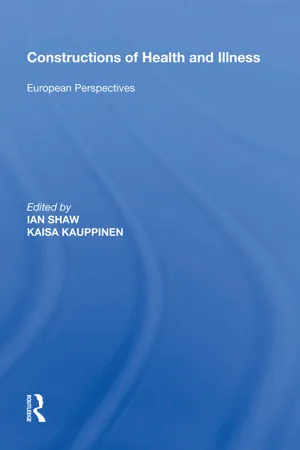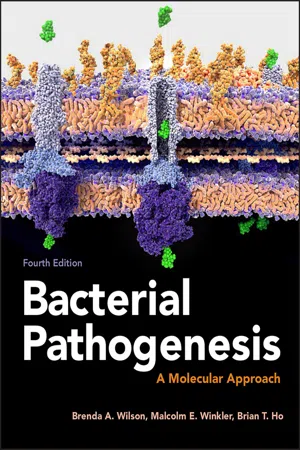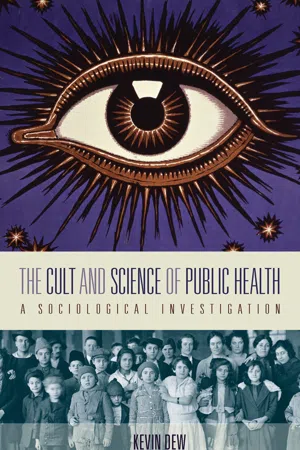History
Mass Vaccination
Mass vaccination refers to the widespread administration of vaccines to a large population, aiming to achieve immunity against a particular disease. This approach has been historically significant in controlling and eradicating infectious diseases such as smallpox, polio, and measles. Mass vaccination campaigns have played a crucial role in public health efforts and have contributed to the prevention of widespread outbreaks.
Written by Perlego with AI-assistance
Related key terms
Related key terms
1 of 4
Related key terms
1 of 3
5 Key excerpts on "Mass Vaccination"
- eBook - ePub
Vaccinology
Principles and Practice
- W. John W. Morrow, Nadeem A. Sheikh, Clint S. Schmidt, D. Huw Davies, W. John W. Morrow, Nadeem A. Sheikh, Clint S. Schmidt, D. Huw Davies(Authors)
- 2012(Publication Date)
- Wiley-Blackwell(Publisher)
As demand for vaccination grew, general vaccination days were conducted in Europe and elsewhere in the world, where vaccination directly from cowpox lesions on cows replaced person-to-person vaccination or vaccination through impregnated threads. These vaccination days were effectively early mass immunization campaigns, which, over a short time period, rapidly and efficiently protected large numbers of non-immune persons against disease. Already by 1820, mass immunization in Sweden had led to an over hundredfold [4] decrease in the number of smallpox cases.It soon became clear that vaccination not only protected individuals against the disease, but that mass immunization, through an overall decrease in the number of infected persons and in smallpox transmission rates, even provided some degree of protection to those who remained unvaccinated. The observed effect – “herd immunity” – became an important benefit of mass immunization campaigns. Mass campaigns protect the targeted population either directly through vaccination of susceptible persons, or indirectly through reducing the risk of infection for those who remain unvaccinated, as the intensity of transmission of the infectious agent decreases in the target population.Since Jenner's time, mass immunization campaigns have become a commonly used tool for disease control programs in both developing and industrialized countries. This chapter presents a brief review of the evolution and current use of mass immunization strategies, including the sometimes “uneasy,” but important and necessary, alliance between mass immunization and routine immunization programs. The presented broad framework should be helpful for policy makers in assessing the role that mass immunization can play in vaccine-preventable disease control.Smallpox eradicationAll member states of the World Health Organization (WHO) in 1967 resolved to intensify smallpox eradication efforts globally [5]. Countries where smallpox transmission had not yet been interrupted agreed to adopt the search and containment strategy in addition to routine immunization. Despite the risks from complications associated with primary smallpox vaccination (from local vaccinal eruption to generalized vaccinia infection and post-vaccinal encephalitis, leading to permanent disability), there were clear benefits of eradication. Thirty-one countries were still endemic for smallpox at the time of the 1967 World Health Assembly resolution. Without accelerated efforts, an estimated two to three million deaths from smallpox would have occurred that year, with many more suffering severe facial and corneal scarring, and blindness. It was clear that smallpox eradication would lead to considerable prevention of death and disability, and be associated with significant savings from reduced costs for treatment and for vaccine, once vaccination against smallpox could be stopped [6,7]. - eBook - ePub
Public Health, Personal Health and Pills
Drug Entanglements and Pharmaceuticalised Governance
- Kevin Dew(Author)
- 2018(Publication Date)
- Routledge(Publisher)
7 Populations and medicationsIn this chapter, the technology of vaccination is discussed to consider the ways in which powerful public health narratives and mechanisms can intensify pharmaceuticalised governance. For some, devoting a chapter to vaccines in a book primarily focused on the influence of pharmaceuticals on our conduct may seem out of place, but it is here for a particular purpose. Vaccines stand out as one of the great hopes of medical practice, as a signifier of the power of medical interventions, as much as, if not more than, antibiotics (or than antibiotics did – if the concern about a post-antibiotic era are borne out). Vaccines are such a powerful signifier because they are viewed as a means of disease eradication – smallpox being the classic example. The hope is that if the world can eliminate the deadly disease of smallpox, it may be able to eliminate all infectious diseases. Vaccines are seen as the reason for low levels of infectious diseases in many developed countries, diseases that wreaked havoc in the nineteenth and twentieth centuries, such as measles, whooping cough and poliomyelitis.But the power of vaccines is also a concern. The goal of preventing infectious diseases in populations is a noble one, but sometimes the means of achieving that end is not so noble. The use of, at times, unsavoury means by those responsible for vaccination development, policy and delivery is rarely acknowledged, and it certainly was not something I was aware of when I embarked on my forays into a sociology of vaccination. My gradual awakening to a critique of some aspects of vaccination policy is not unique, and with a little research one can find a literature related to vaccine critique and resistance. A comparison between vaccines and pharmaceuticals is informative, both in the different ways they are understood and in the discourse of shared responsibility for health that is central to vaccination policies and may become more central to pharmaceuticals. - eBook - ePub
Constructions of Health and Illness
European Perspectives
- Kaisa Kauppinen(Author)
- 2017(Publication Date)
- Routledge(Publisher)
Vaccination involves the injection of antibodies directly into the body (passive) or, more commonly, the introduction of organisms by mouth or injection which then stimulate the immune system to produce the specific antibodies (active) (Bedford and Elliman, 1998, pp. 2-5). Vaccination is focussed on the community level, so that the level of analysis is the social. According to the ideal of 'herd immunity', however, individuals within the society benefit, as the overall incidence of disease is reduced, if immunisation is maintained at a high enough level. Vaccination is an example of systemic preventive medicine (Mills, 1993), a policy supported as cost effective through standard cost-benefit economic analysis.A Foucauldian perspective would stress that this simple explanation of vaccination masks the fact that the current dominant understanding of health and disease is a reflection of powerful historical discourses, as opposed to underlying medical truths about the human body (see Annandale, 1998, pp. 34-35). The science upon which vaccination rests is based on the germ theory of disease, the idea that illness is caused by 'foreign invaders' (Bedford and Elliman, 1998, p. 2). A medical anthropology approach is useful here in contextualising this discourse by demonstrating that the expert vision of immunity has changed across time, and can be related to social, as well as scientific changes (see Martin, 1994). More broadly, work in the sociology of knowledge school has also demonstrated that the ideal of 'prevention' itself is culturally constructed (Sachs, 1996). This challenges the assumption that expert understandings are somehow more 'fixed' than lay ones, or that they can be adequately understood without reference to the social or the political.One explanation for a decline in uptake of vaccination, traditionally given by supporters of Mass Vaccination, is that the public have a short memory and cannot remember a time when childhood diseases resulted in death and disability (Bedford and Elliman, 1998, p. 1). When individual parents come to make decisions about vaccination their comparison of risk will therefore be biased, as the estimate of the risk of disease, as opposed to the risk of the vaccine, will be artificially reduced. In short, therefore, vaccination is a victim of its own success. Underlying this is the argument that the public have misunderstood the reality of the relationship between health, disease and prevention. The policy implication is that the historical perils of childhood diseases should be advertised, alongside the historical success of vaccination in reducing morbidity and mortality. - eBook - ePub
ASM Books
A Molecular Approach
- Brenda A. Wilson, Malcolm Winkler, Brian T. Ho(Authors)
- 2019(Publication Date)
- ASM Press(Publisher)
Figure 17-1 ). Indeed, one of the greatest achievements of the past century was the complete eradication of smallpox through a massive worldwide campaign conducted in the 1960s and 1970s by the World Health Organization (WHO). After the last known natural case was reported in 1977 in Somalia, the WHO officially declared smallpox eradicated from the world in 1980.Figure 17-1. Timelines and impacts of major vaccine introductions on disease outbreaks. The introduction of vaccines through immunization programs over the past five decades has played a major role in eliminating certain deadly diseases from the United States. (A) The effect of introduction of the diphtheria toxoid–containing vaccine in 1948 on the annual number of diphtheria cases. (B) The effect of introduction of the inactivated polio vaccine in 1955 and the attenuated live vaccine in 1961 on the number of polio cases. (C)The effect of introduction of vaccine against measles in 1963 on annual deaths due to measles. The mumps component was added in 1967 and the rubella component in 1969 to generate the current trivalent MMR vaccine.Vaccines are often the most cost-effective medical intervention to prevent infectious disease and death. They are not only much cheaper than the cost of treatment of infectious diseases, but they also reduce suffering and long-term consequences of the disease. Patients who are diagnosed and treated for an infection that is underway have already suffered symptoms serious enough to cause them to seek medical attention, and may even have sustained irreversible damage. In contrast, vaccines prevent the infection from becoming established in the first place, thereby avoiding significant disease symptoms and damage. Importantly, in cases where there is no effective therapy for an infection, vaccines may be the only way to protect patients from serious disease.Vaccines are clearly a major health care bargain. But, if vaccines are so important, then why are there not more of them? Unfortunately, many of the barriers to vaccine development are financial, legal, or political, rather than scientific. In the market economies of developed countries, there have been financial disincentives to develop or produce new vaccines, especially vaccines that would have their greatest impact in the developing world. Vaccines are not nearly as profitable as cholesterol-lowering drugs or blood pressure medications that have to be taken daily for long periods of time or throughout an individual’s life. - eBook - ePub
The Cult and Science of Public Health
A Sociological Investigation
- Kevin Dew(Author)
- 2012(Publication Date)
- Berghahn Books(Publisher)
Resistance to vaccination in economically poor nations can be particularly strong. Editors of medical journals, for instance, have accused vaccine manufacturers of exaggerating the number of deaths that result from the absence of the relevant vaccine. Authors based at the Center for Disease Control in Atlanta admitted a 50-fold inflation of hepatitis B mortality in India (Puliyel and Madhavi 2008). More broadly, unease has been expressed over the way in which the WHO and UNICEF have imposed programmes on nations, with such an imposition being eagerly accepted by governments despite the lack of ‘scientific’ evidence to support them (Banerji 1990).Those who question the merits of vaccination campaigns face formidable opposition. The practice of vaccination to confer immunity or protection from infectious disease is held in such high regard within both the medical community and the public at large that it is presented as a cornerstone of preventive medicine (Streefland 2001). Heller argues that there is a cultural narrative of vaccination, defining a cultural narrative as: ‘An economical story that elides and overwhelms contradictions, and simplifies our understanding of reality with scripted meanings and metaphors so that we can more easily make sense of the whole’ (Heller 2008: 8).Due to the cultural traction gained by the view of vaccinations as the eradicator of deadly and debilitating diseases, they have become something of an icon of modernity (Johnston 2006). This is particularly so of the smallpox vaccine. This was the first vaccine to be widely used, and its success continues to encourage similar campaigns: the eradication of smallpox is often held as the prime example of vaccination, and it has become the basis of a vision of universal disease eradication (Copp and Zanella 1992). Indeed, it is suggested here that the hope of emulating this achievement and wiping other deadly diseases from the face of the earth has acquired so much strength and momentum that it allows for very little dissension: if there is a price to pay for some in terms of adverse reactions to vaccinations then that is for the good of the whole community, and ultimately the whole world.
Index pages curate the most relevant extracts from our library of academic textbooks. They’ve been created using an in-house natural language model (NLM), each adding context and meaning to key research topics.
Explore more topic indexes
Explore more topic indexes
1 of 6
Explore more topic indexes
1 of 4




